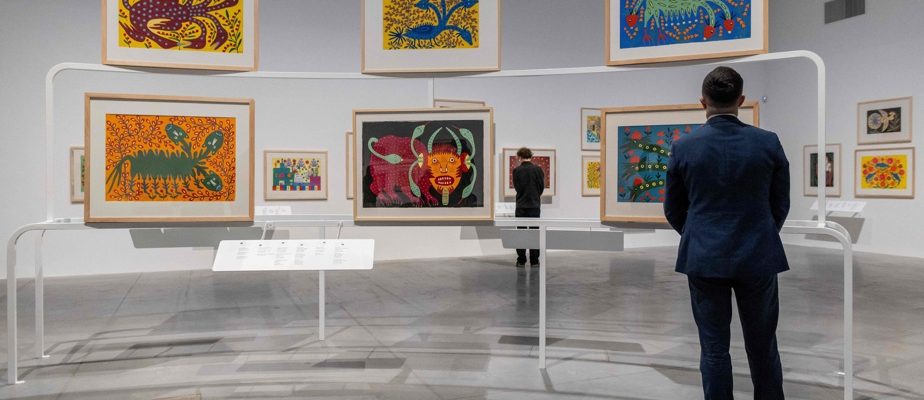(Warsaw) Days after invading Ukraine, Russian forces fired rockets at a museum housing colorful paintings by Ukrainian folk artist Maria Prymatchenko, admired by Pablo Picasso and Marc Chagall.
The building burned down, but the cheerful works of this artist, who died in 1997, survived.
Residents of the northern Ukrainian town of Ivankiv managed to save these paintings, making this imaginative artist a symbol of endurance and hope.
Prymatchenko’s work, imbued with light despite a life marked by difficulties, can be appreciated from Friday in Warsaw, which is now welcoming thousands of refugees from neighboring Ukraine.
The exhibition features dozens of gouache paintings depicting rural life and fantastical creatures in a childlike style with bright colors such as neon pink, sunflower yellow and blood orange.
“Besides being a famous painter, Maria Prymatchenko is also a great symbol of Russia’s failure in its attempt to erase Ukrainian identity and culture,” said Vitalii Bilyi, counselor at the Ukrainian embassy. Ukraine in the Polish capital.
“And thanks to this exhibition, we can get the message across,” he said during the preview of the exhibition entitled “A Tiger Entered the Garden”, which runs until ‘at the end of June at the Museum of Modern Art in Warsaw.
“Bouquet of the Unknown Soldier”
Prymatchenko was born in the village of Bolotnia in 1909, and during the nearly nine decades she lived, she survived polio, the Great Famine (Holodomor) in the years 1932-33, two world wars – she lost her husband during the second – and finally at the Chernobyl nuclear disaster.
“She showed great strength of mind and painted all her life. The paintings, although colorful, show different aspects of Ukrainian life and tragedy,” said Myroslava Keryk, director of the Ukrainian House foundation, which promotes her country’s culture in Poland.
“And they give hope of victory, that we will persevere and that the war will end,” she said.
Prymatchenko also combined his images of animals or nature with small poems commenting on everyday life. They were often riddled with grammatical errors due to his lack of education, Ms.me Keryk.
A work in the exhibition expresses a meditation on hunger with a joyful yellow and pink depiction of a goat and the title Dear little goat, have you eaten, have you drunk?.
Another painting on paper shows bright pink tulips against a dark background, with a caption that begins: “A bouquet to the Unknown Soldier.” Honor and glory to you, dear warriors! “.
“Living like flowers”
Having lost her husband in the war, the artist painted a whole series dedicated to the fighters, which, several decades later, “has an incredibly current anti-war message,” noted co-curator Szymon Maliborski.
“These are works that allow Prymatchenko, on the one hand, to avoid directly depicting war and, on the other hand, to show the struggle with loss, the death of a loved one,” he said. -he declares.
A sunny painting of exotic blue birds is offset by the following poem: “Four parrots sit in a cherry tree and hum. The boys go off to the army and the girls go with them wishing them good luck.”
This contrast between optimism and trauma is typical of the artist who wanted “people to live as flowers bloom”.
She often “mixed the solemn and the comic, adding a touch of humor or acceptance to her critiques,” Mr. Maliborski said.
“There is a kind of acceptance of the world and a desire to change it at the same time,” the commissioner said.
